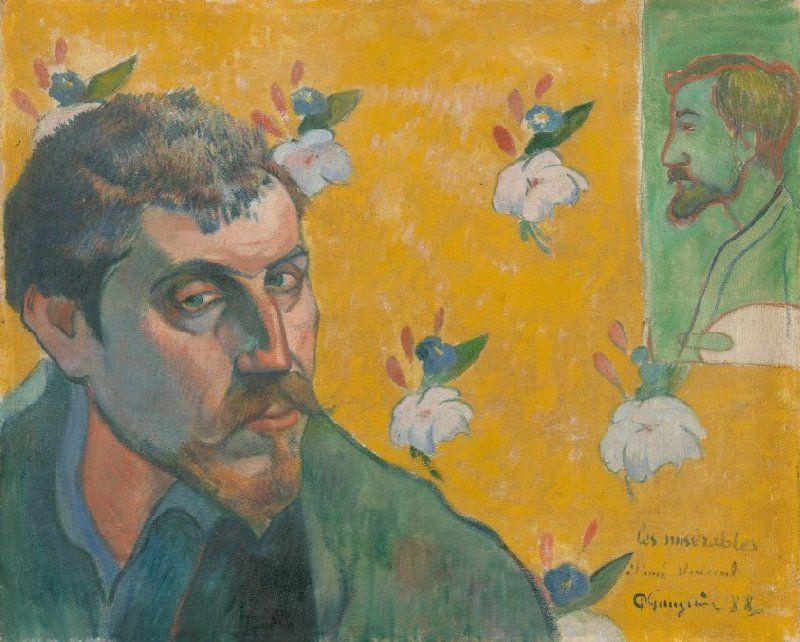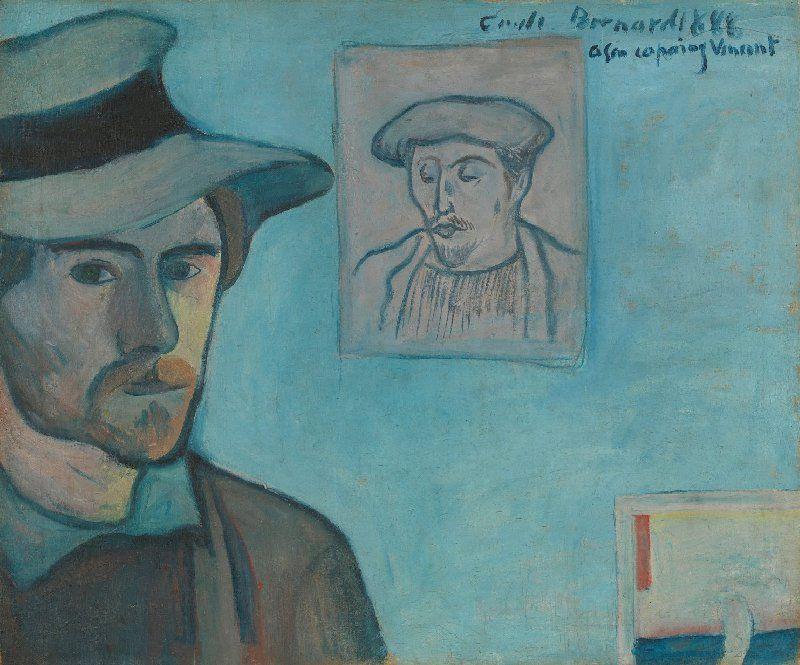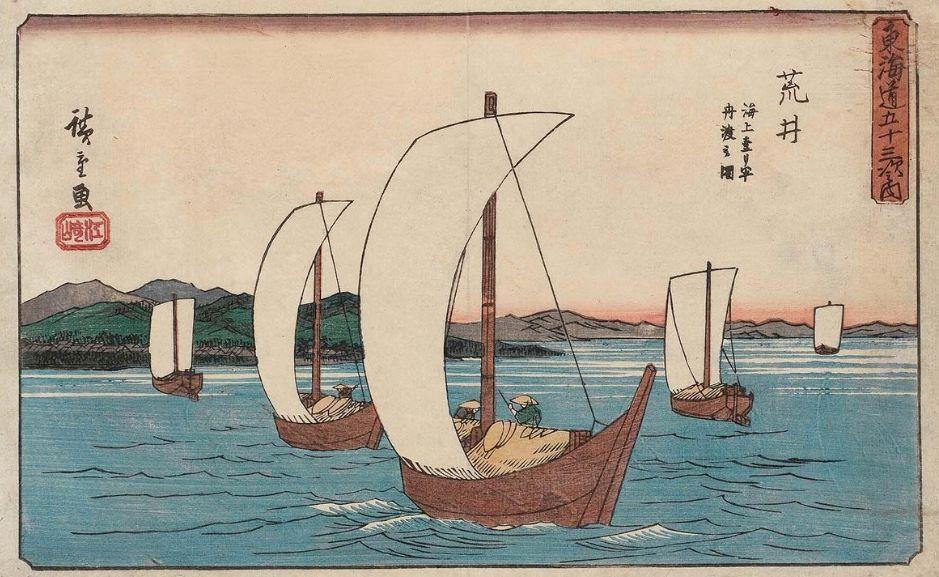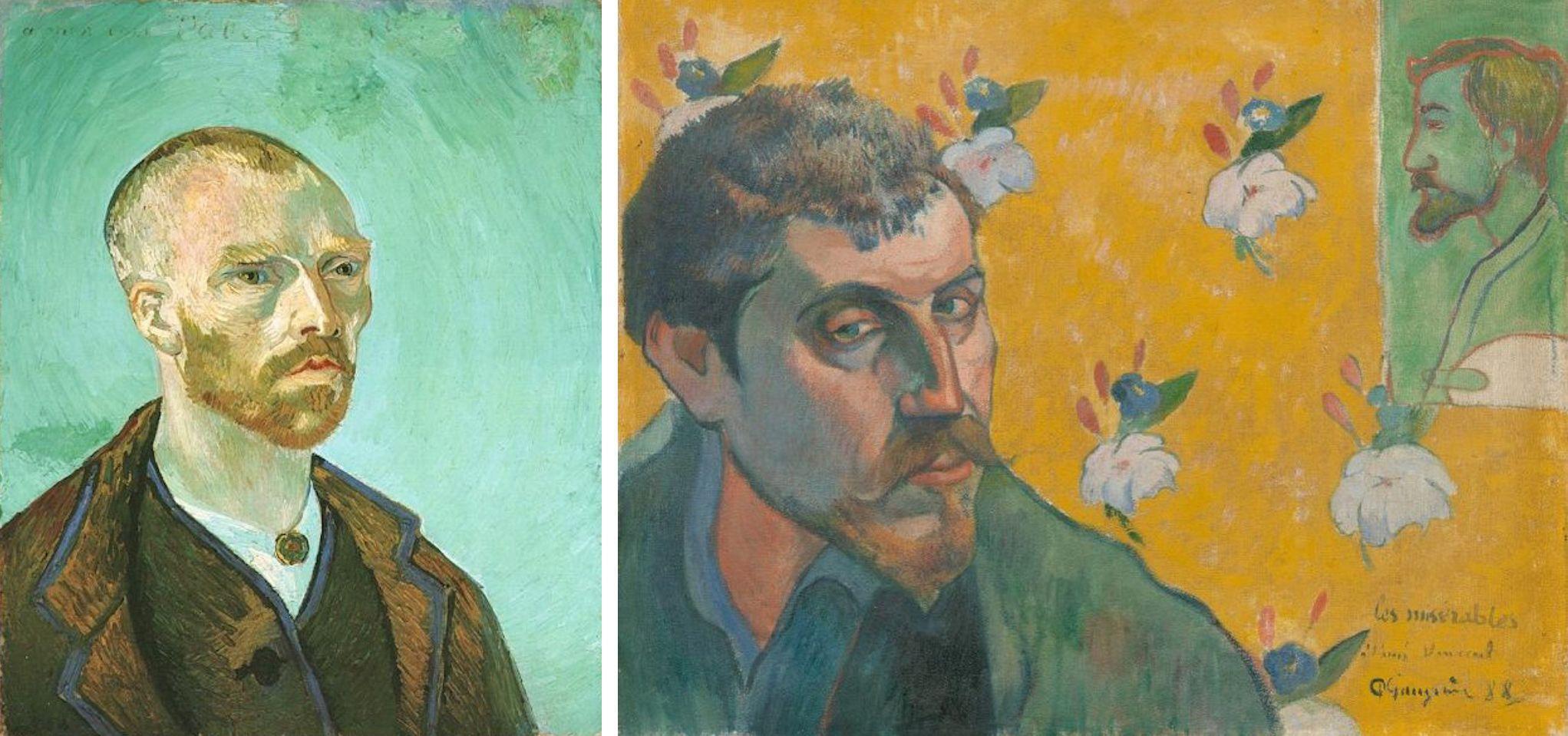(MENAFN- USA Art News) When van gogh suggested swopping portraits with Paul Gauguin he awaited the painting's arrival with huge anticipation. What actually arrived proved to be a disappointment, with Van Gogh concluding that he himself was a better portraitist than his older and more experienced friend.

Paul Gauguin's Self-Portrait with Portrait of Emile Bernard (Les Misérables) (September 1888)
Credit: Van Gogh Museum, Amsterdam (Vincent van Gogh Foundation)
The story behind Gauguin's self-portrait with portrait of emile bernard (les misérables) (September 1888) is told in a new online catalogue of artworks collected by Vincent and his brother Theo and which are now at Amsterdam's Van Gogh Museum.
Joost van der Hoeven, a researcher at the museum, has published entries on self-portraits by two of Van Gogh's colleagues, Gauguin and Emile Bernard, done when the pair were working together in Pont-Aven in Brittany. Van Gogh, then in Arles, initiated the exchange, asking his two colleagues to paint portraits of each other.
The pair in Pont-Aven took a slightly different approach, since young Bernard felt intimidated at the idea of portraying Gauguin, who was 20 years his senior. Instead of portraits of their colleague, they each produced self-portraits, but included small sketches of their colleague in the background.
A few days before the paintings arrived in Arles Gauguin wrote to Van Gogh, saying that he had portrayed himself as the character of Jean Valjean, a victim of injustice and an outsider in Victor Hugo's novel Les Misérables. In the self-portrait Gauguin's eyes are downcast, as he cautiously looks out in the corner of the composition.
Van der Hoeven argues that when he opened the package, Van Gogh found Gauguin's depiction“too sombre and lacking in spontaneity”. The Dutchman was“fundamentally shocked by the way Gauguin's art had evolved” that year. Writing to Theo, Vincent commented that the self-portrait looked“studied” and excessively elaborate, with Gauguin appearing“ill and tormented”.
Van Gogh had the answer. Gauguin should hasten to come to Arles, so they could work together in the Yellow House, the small building that he rented in Arles. As Vincent explained to Theo:“He [Gauguin] needs to eat, to walk with me in some beautiful countryside – to have a screw once in a while – see the house as it is and as we'll make it, and in a word, thoroughly enjoy himself.”

Emile Bernard's Self-Portrait with Portrait of Gauguin (September 1888)
Credit: Van Gogh Museum, Amsterdam (Vincent van Gogh Foundation)
Emile Bernard completed a similar composition, a self-portrait with a small sketch of gauguin . He also included what might appear to be a curious abstract motif in the lower-right corner. It is actually part of a Japanese print, an acknowledgment of the three artists' admiration for the art of Japan. This print has recently been identified as one from Utagawa Hiroshige's series The Fifty-three Stations of the Tōkaidō Road (1841–44). It is very likely that the Hiroshige print had earlier been given to Bernard by Van Gogh.

Utagawa Hiroshige's Arai: View of the Mile-and-a-Half Sea Ferry from the series The Fifty-three Stations of the Tōkaidō Road (1841–44)
In return, Van Gogh sent two paintings to Pont-Aven. For Gauguin, he painted a dedicated self-portrait , a powerful work showing him against a strident light turquoise background, his hair had just been shaved. As Van Gogh commented, he had also“slightly slanted the eyes in the Japanese manner”, to make him appear something like a Buddhist monk. For Bernard, he sent a recent Arles riverscape, quay with men unloading sand barges (August 1888, Folkwang Museum, Essen).

Van Gogh's Self-Portrait Dedicated to Paul Gauguin (October 1888)
Credit: Harvard Art Museums / Fogg Museum, Cambridge, Massachusetts (bequest Maurice Wertheim, Class of 1906)
Van Gogh and Gauguin had different conceptions about self-portraiture. As Van der Hoeven explains:“Van Gogh still valued the self-portrait as an expression of the subject's state of mind at a given point in time, whereas Gauguin was bent on using his likeness to convey an idea.”
Although Vincent diplomatically described Gauguin's painting as“remarkable”, he immediately went on in a letter to Theo to say more positively that“I myself like Bernard's very much”, admiring its simplicity and directness.
Van Gogh almost certainly hung the two self-portraits together in the Yellow House, most likely in his small studio room. Isolated in Arles, he was lonely and wanted to feel closer to his faraway artist colleagues. The depictions of his painter friends must have reassured him as he worked away at his easel.
Three weeks after the arrival of the two self-portraits Gauguin stepped off the train in Arles, to eventually stay with Van Gogh for ten weeks. Initially things went well, but tensions soon developed. As we all know, it ended with Vincent's mutilation of his ear and Gauguin's swift departure for Paris.
Today, seeing the self-portraits of Van Gogh and Gauguin side-by-side, brings us closer to these two remarkable“outsiders”.

Van Gogh's Self-Portrait Dedicated to Paul Gauguin (October 1888) and Paul Gauguin's Self-Portrait with Portrait of Emile Bernard (Les Misérables) (September 1888)
Credits: Van Gogh Museum, Amsterdam (Vincent van Gogh Foundation)
All Adventures with Van Gogh blogposts are © Martin Bailey